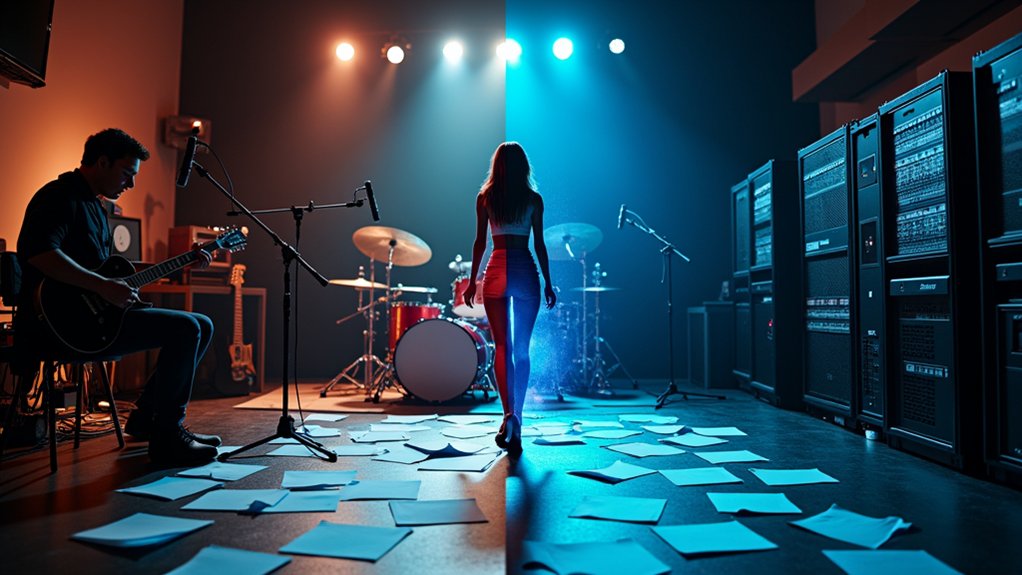A seismic shift in the music industry’s landscape is occurring as artificial intelligence makes its way onto the prestigious Billboard charts, challenging traditional notions of artistry and creativity. Since early 2023, AI-generated music has begun appearing on Billboard’s digital and streaming charts, coinciding with notable advances in generative AI models and music synthesis technology.
Though still representing less than 2% of entries in top 100 charts as of mid-2025, these artificial performers are steadily gaining attention in the competitive music marketplace. Billboard introduced specific markers to identify AI contributors on their digital platforms in late 2024, acknowledging the growing presence of non-human creators.
AI artists are making their mark on the charts, with Billboard now officially recognizing these digital creators in the music ecosystem.
The charting system applies identical metrics to both AI and human artists, measuring sales, streaming data, and radio airplay without discrimination. However, industry insiders have expressed concerns about potentially inflated stream counts, prompting Billboard to contemplate implementing verification processes to safeguard the integrity of their rankings.
Names like “Yona,” “Liam AI,” and “Mia Synth” have emerged primarily in electronic and pop crossover categories, typically through independent or tech-driven labels rather than major traditional companies. Despite their visibility, AI artists rarely crack the top 10 positions in major Billboard charts.
Their music, often characterized by synthetic vocals or heavily processed sounds, tends to attract initial curiosity but suffers from steep drop-off in repeat listenership. The commercial viability of AI musicians remains questionable. While they’ve found success in advertising and background music applications, their concert appearances are limited to virtual or holographic formats, remarkably impacting mass appeal.
Additionally, complex questions about copyright ownership and royalties complicate their chart inclusion, while concerns about authenticity challenge their long-term legitimacy. Unlike human performers who build careers through consistent music releases and developing a personal brand, AI artists struggle to create the authentic connections that sustain long-term fanbases. This contrasts sharply with human musicians who can supplement their income through sync deals with visual media that forge emotional connections with audiences.
Whether AI artists will become legitimate chart contenders or remain novelty acts remains to be seen as this technological revolution unfolds.




